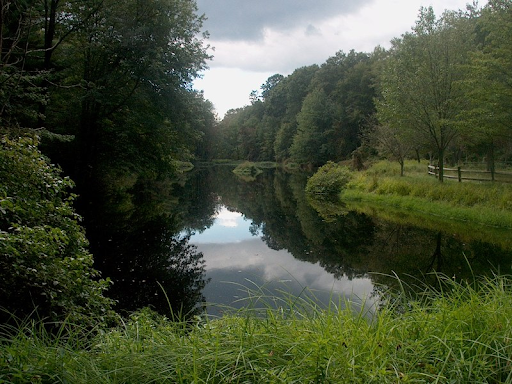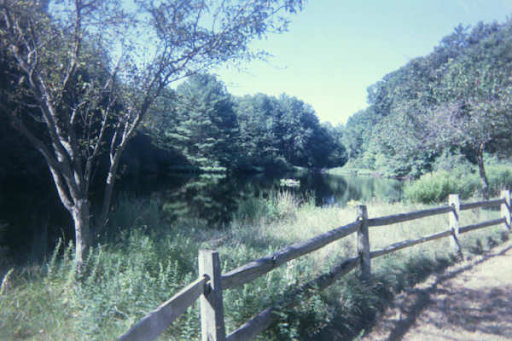Stratford’s Roosevelt Forest
 Roosevelt Forest is an Urban Forest: It is a 401 acre, wooded area in the north end of Stratford located between several residential areas. Urban forests act as habitat for animals. They also help to filter air and water, and control stormwater. Trees help to take in carbon dioxide and to release oxygen that people and animals need to live. Very few towns in the United States have their own forest.
Roosevelt Forest is an Urban Forest: It is a 401 acre, wooded area in the north end of Stratford located between several residential areas. Urban forests act as habitat for animals. They also help to filter air and water, and control stormwater. Trees help to take in carbon dioxide and to release oxygen that people and animals need to live. Very few towns in the United States have their own forest.
Our forest is a mixed deciduous forest, which means that there are many trees which lose their leaves in the winter (deciduous trees such as maples, oaks) but there are also a substantial number of coniferous trees that keep their needles during the colder months (such as pines and spruces). There are several layers to the forest, including the upper canopy, the mid canopy, and the forest floor. Many bushes, ferns, and wildflowers also grow there. Various species of mammals, insects, reptiles, and amphibians make their homes in each strata.
Approximately one-third of the forest is wet for some, or all, of the year. There are many wetland areas and vernal pools, as well as a large pond. Several streams run through the forest, leading to or from the pond, the Housatonic River, or Beaver Dam Lake.
 History of Roosevelt Forest
History of Roosevelt Forest
There are a few stone walls located within Roosevelt Forest, which indicate that a portion of the land was likely used for agriculture in the past. In the 1930s, the town of Stratford purchased the land from Donald Sammis who was the Town Manager at the time. The United States was in the midst of The Great Depression and many people were out of work. President Franklin D. Roosevelt had a social program called the Works Progress Administration (W.P.A.) which hired unemployed people to construct buildings and highways, dredge rivers and harbors, and participate in soil and water conservation projects. The building of the Merritt Parkway was one of these W.P.A. projects. In Roosevelt Forest, W.P.A. workers blazed trails and built structures to provide residents of Stratford with a place for recreation. The forest also helped to protect wildlife and the watershed.
Activities within the Forest
Today, people use Roosevelt Forest for many outdoor activities: hiking, mountain biking, rock climbing, trail racing, cross-country skiing, snowshoeing, picnicking, camping, bird watching, and more. The Boy Scouts and the Girl Scouts each have campgrounds in the forest, and members of those groups have done much work in keeping the trails clear and improving signage. There is an enclosed firing range within the forest where members of the Stratford Police Department practice shooting their weapons. There is also a large park for dogs to get exercise called Jared’s Dog Park. Roosevelt Forest also serves as a wildlife sanctuary.
Animals
Many types of birds can be found within Roosevelt Forest, including ducks, wild turkeys, cormorants, herons, turkey vultures, hawks, falcons, owls, woodpeckers, chickadees, woodpeckers, robins, and many more. The forest is also home to deer, chipmunks, squirrels, foxes, raccoons, mice, snakes, turtles, frogs and other amphibians. Occasionally, coyotes and black bears will be spotted in the area as well.
Learn more about Roosevelt Forest from these two websites:
http://www.rooseveltforest.info/
https://www.stratfordct.gov/rooseveltforest
Learning Activities
Map of Roosevelt Forest: https://www.stratfordct.gov/filestorage/39879/40023/42600/roosevelt_forest_map1_%281%29.pdf
Use the map linked above to answer the following questions:
Which trail passes by both the Boy Scout Camp and the Girl Scout Camp?
Which trail would take you to the picnic area and the parking lot?
Which trail runs parallel to Beaver Dam Road without ever intersecting it?
The most northern trail is named for this forest animal which lives in the area of Roosevelt Forest:
If you followed the Blue Trail as far south as possible, which road would it lead to?
Explore Connecticut’s Wildlife at Sessions Woods
This packet, created by the State of Connecticut, includes information, word scrambles, matching games, coloring sheets, and more about another Connecticut forest: Sessions Woods in Burlington, CT. https://portal.ct.gov/-/media/DEEP/wildlife/pdf_files/outreach/SessionsWildlifeWorkbookpdf.pdf
The Book of Stuff to Do Outside: Match animal tracks, find direction without a compass, make a water scope, and more with the information in this publication: https://adcouncil-campaigns.brightspotcdn.com/5f/19/9a204915452984aa23e5b1fd3c1e/book-of-stuff.pdf
Learn About Forests From Tree Rings: https://www.plt.org/wp-content/uploads/pdf/PLT_LearnAboutForests_TreeCookies.pdf
Tree Identification Field Guide: https://www.arborday.org/trees/whattree/
Play & Learn About Forests
Crafts
Forest Animal Crafts:
https://www.dltk-kids.com/animals/forest.html
Create a Leaf Rubbing: https://www.firstpalette.com/craft/leaf-rubbings.html
Fun Activities (coloring pages, word searches, etc.)
Coloring pages:
Baby animals of the deciduous forest coloring pages: https://www.coloringnature.org/coloring_page/baby-animals-of-the-deciduous-forest/
Forest coloring pages: http://www.supercoloring.com/coloring-pages/tags/forest
Forest Maze:
http://gatrees.net/resources/education/fun-pages/FunPageForestMaze.pdf
“Found in the Forest” Word Search:
https://thewordsearch.com/puzzle/295/found-in-the-forest/
